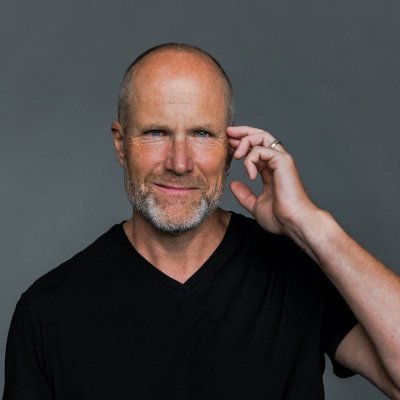
On Monday, Radio Ink reported on how Nielsen 2022 Q3 reports showed AM/FM radio’s audience size 18-49 had overtaken TV for the first time in history. This lived up to the 2019 prediction by Deloitte Director of Research, Technology, Media & Telecommunications, Duncan Stewart that radio’s audiences 18-34 would outnumber TV’s by 2025.
Radio Ink sat down with Stewart to get his thoughts and predictions on more of radio’s future compared to TV, as well as hot issues like 2023 ad spend, podcasting, and AM’s place in the car.
Radio Ink: You correctly predicted that radio’s audience persons 18-34 would pass TV’s by 2025 in 2019. Since you made that prediction, a lot changed – do you think the pandemic accelerated the timeline or were there other factors?
Duncan Stewart: “Many people expected radio’s numbers to drop off of a cliff. We did not see that. By and large, during the pandemic, radio was pretty stable. TV did not so much collapse as it kept collapsing. There was a slightly odd thing that occurred: since 2010, TV viewership, especially by younger viewers has been falling very, very consistently year over year. The decline we’re seeing is part of a decade-long trend that was not particularly interrupted by the pandemic except for a one to two-month period.
Radio’s sustained place is global. We are seeing this in France, the Nordics, the UK, and Canada as well. Radio has retained audience and reach and number of hours per day in a way that TV has not, especially for younger viewers.”
RI: If TV lost audience share to cord-cutting and streaming – what do you see as radio’s biggest threats?
DS: “It’s not just cord-cutting. Even of people who continue to have pay TV, they are watching fewer hours of television per day. It’s a loss of video minutes to other sources, largely streaming.
Let me phrase your question another way: when I wrote my report in 2019, what was I worried about?
What was I worried about? Podcasting. Back in ’18/’19, people were paying a lot of money for podcast rights. People were going to podcasters and spending on them. Media companies were investing in technology around podcasting. Since then, two things have happened. Podcasting reach has gone up a bit, but the hours of podcast listening have plateaued and even dropped in many markets, even in younger demographics. It’s not like they moved away from podcasting – they haven’t – but podcasting has not captured a lot of radio share. Podcasting kind of coexists. It’s a symbiotic relationship.
The other thing is, and I hate to be mercenary about it, it’s all about the Benjamins. At the end of the day, if I am an audio person and I want to make money at what I do, monetization via radio is established and well-known. I can place an ad beside someone’s voice and make money at that. That is generally not true of podcasting. The monetization problem around podcasting is they’ve got audiences and demographics, but they are having a very hard time translating that into money.
So one of the attractions of radio is, instead of it being ‘podcasting is the new radio’, its like radio is just like podcasting – except you can make money at it. That’s a pretty compelling proposition for a lot of people.”
RI: A lot of radio group’s Q4 earnings calls predict a lot of stagnation for 2023. A lot of national advertising is trending downward for radio. We know the threat of recession and the War in Ukraine is upending world economics, but given radio’s numbers now surpassing TV, what effect do you see this having on future ad spend?
DS: “I don’t want to sugarcoat anything. Bad economy. Banks failing. Interest rates. Stock market. Tech companies laying people off. This is not a time when you are looking for ad spending to grow at double digits. However, and this was a point I made back in 2019, I did not say that radio was going to experience a dramatic rise in young listeners. What I said was it would decline more slowly than TV. I will make that same prediction for advertising this year. Interestingly, in the UK, although they are looking for TV ad revenues to be down 2-4%, they’re actually looking for radio to be up very slightly. Obviously, there is a difference in market and I don’t want to apply too much, but I would expect ad dollar revenues for radio in the US to probably be down, but probably down less than TV.
We wrote a prediction about five years ago. I am planning on revisiting that. I am just getting slightly into the radio numbers worldwide, but as they have been known to say, stay tuned – Deloitte will be having a prediction around radio launched this December.”
RI: Let’s talk about radio’s battle for the car. Edison Research’s Infinite Dial 2023 showed 73% of adults say they still listen to radio. A lot of that is obviously on the road, but there’s debate over that changing. AM is in danger of being left out of electric cars – how important is staying a featured part of the dashboard to radio?
DS: “This is where you want to have a conversation about what is radio. Does radio really need to be someone’s voice encoded in amplitude modulation at 730kHz? That’s the platform, that’s the technology. If I have a device in my car that’s connected to the internet and I am listening to a radio station that’s transmitted over cellular networks, as far as I’m concerned, that’s still radio. I think it’s possible that one day there will be no more AM radio. I don’t think that’s the end of AM radio, I think they just have to end up moving to a different delivery mechanism, which would be digital OTA primarily over cellular connectivity.”
RI: What about AM’s role in emergency broadcasting and public safety?
DS: “That’s a complicated question. One of the interesting things – I was just at Mobile World Congress in Barcelona, and one of the technologies we’re getting at is 911 on your phone direct to satellites in orbit. It’s not like the Low Earth Orbit ones which you can stream video and stuff on; this is low bitrate. But this is using chips and frequencies and technologies that theoretically could be on every phone. That is potentially a way you could do emergency broadcasts to phones over an area. This is a politically charged and sensitive topic, but from a technological perspective, I believe there are lots of interesting things going on. When I said there could be an end to AM radio, I am putting on my – not my 18-24 month predictions hat, but my one day 10, 20, 30 years from now hat – it would not surprise me if there was no more AM.”
RI: One last question. In your research and analysis of media, is there anything you see radio companies are in danger of missing out on?
DS: “Do you know what the book industry should do to make it better, 500 or 600 years after Gutenberg? Absolutely nothing. By and large, you’re looking at a medium and a form factor that has billions of fans worldwide who don’t really want “the metaverse of books.” Similarly, I don’t think we want immersive 3D avatar radio. I love radio for what radio is. I don’t need it to be something that it isn’t. I don’t actually think radio is missing much.
Obviously, the one exception to that will be, without naming names, the radio services out there that have subscriptions. When I look at the media world, you’ve got – in India, you’ve got a whole bunch of video-on-demand companies that charge almost nothing for a subscription fee, but there were lots of ads. Then in North America, there were a bunch of video-on-demand companies that had no ads, but fairly high subscription fees. In India, they’re actually moving away from the ad-supported model and starting to charge small, but nonetheless significant, subscription fees. Meanwhile, all of North America, all of our formerly subscription-only services are now offering ad tiers as well.
Take a look at newspapers, magazines, music streaming, and even some podcasting services – there’s both an ad model and a subscription model and many people believe the optimum thing is some sort of hybrid. Now, for broadcast radio – obviously, as long as you’re doing terrestrial over-the-air broadcasting you can’t charge subscriptions, but the one thing – this is me putting on my 30, 40, 50 year hat – it would be interesting to see if radio moves towards more of a subscription model. I’m not sure it will, but when I look at the media landscape, this idea of ads being good but subscriptions being good too is certainly something we’re seeing in multiple media verticals.”






That was one of the most thoughtful and insightful interviews I have read in a long time. Way to go R.I. Big thanks to D.S. for the frank discussion.
Thanks Robert – happy to be able to be a part of this conversation!
I hope the pontificators of the last few years read this article.